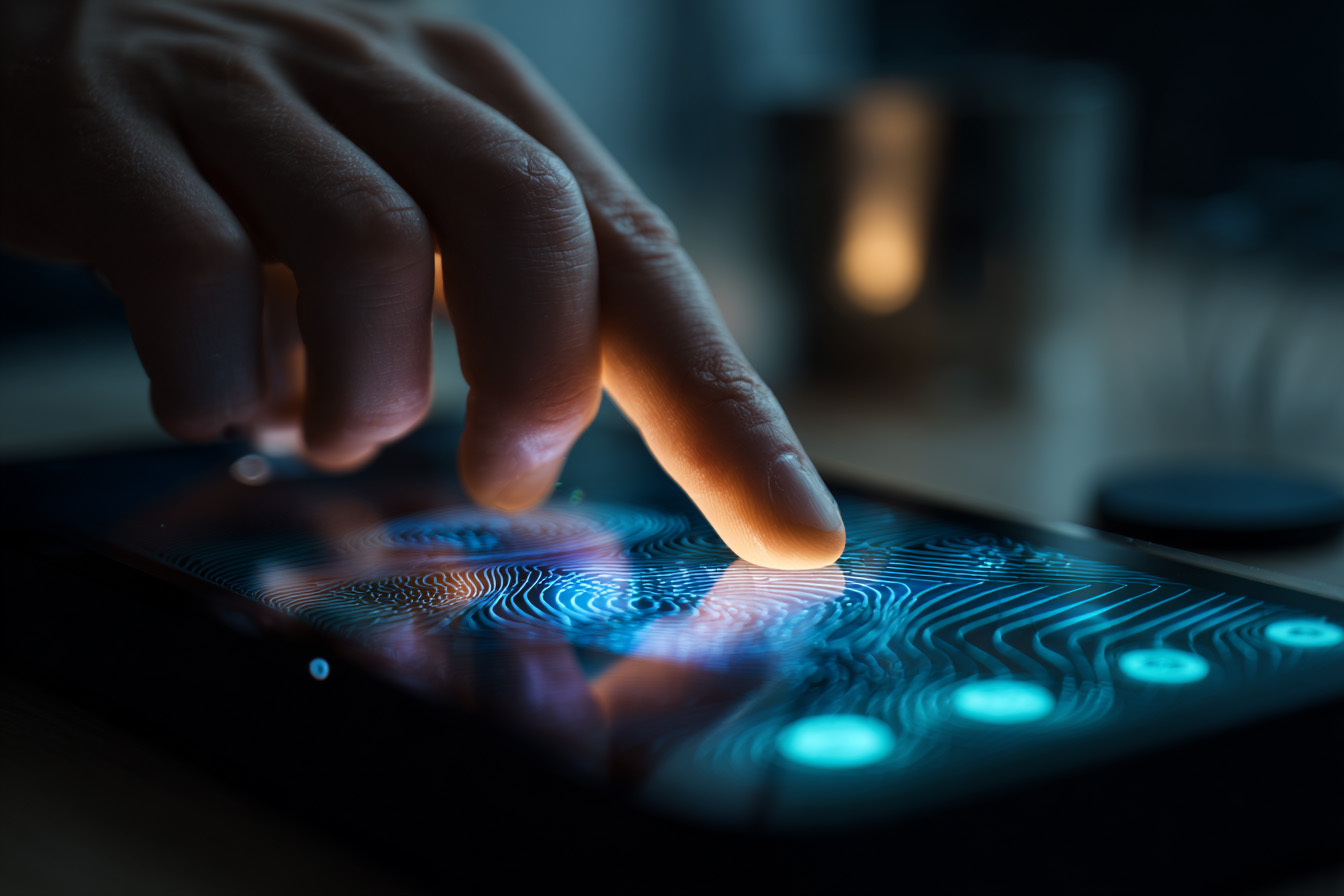How Different Tactile Frequencies Shape Our Haptic Experience

Ever thought about why a smartphone notification buzz feels completely different from the gentle vibration of a massage chair? The human body interprets different vibration frequencies as entirely distinct sensations. Understanding this biological reality is what separates natural-feeling haptic experiences from distractions.
The difference between a calming 10 Hz pulse and a sharp 300 Hz burst isn’t just about numbers; it’s the difference between relaxation and irritation. When products have this capability and designers are able to master these frequency ranges, they can create experiences that feel intuitive and seamless. Miss the mark, and users immediately notice something feels “off.”
Decoding the Frequency Spectrum
Tactile frequencies work like musical notes for your skin. Just as a bass line feels different from a high-pitched whistle, vibrations at 10 Hz create an entirely different sensation than those at 300 Hz.
Our skin contains specialized receptors that have evolved to detect specific frequency ranges. Merkel discs catch the slow, gentle sensations. Meissner corpuscles pick up the middle range where most of our daily tactile experiences live. Pacinian corpuscles are tuned to higher frequencies, acting like motion detectors for rapid changes in pressure.
This biological architecture means that when we choose a frequency, we’re essentially selecting which part of the user’s nervous system we want to engage.
The Feel of Different Frequencies
Low frequencies (10-90 Hz) tap into something primal. These vibrations feel organic, almost alive. Just like a cat purring on your chest, or how you can feel your own heartbeat after a rigorous lap. Studies show that haptic heartbeat feedback can reduce self-reported anxiety and help users feel calmer, and a slow haptic stimulation that simulates heart rate has a significant calming effect.
Mid frequencies (90-180 Hz) are the workhorses of haptic design. They sit in the sweet spot where sensation is clear but not overwhelming. Research shows that mobile phones generally vibrate in the 130-180 Hz range, and studies have found that the optimal vibration frequency for haptics ranges from 150 Hz to 180 Hz.
This frequency range also gives us the most nuance, which allows users to distinguish subtle vibration patterns (source). This makes mid frequencies ideal for everyday interactions, as they’re strong enough to cut through distractions, but refined enough to deliver expressive, comfortable tactile cues.”
High frequencies (180+ Hz) demand attention. These are the sharp, crisp sensations that feel precise and immediate. They’re perfect for moments that need emphasis. Instances like a button click that confirms an action or the snap of a virtual rubber band breaking. Research confirms that Pacinian corpuscles, which detect these high frequencies, have optimal sensitivity at 250 Hz, making them ideal for precise, attention-grabbing feedback.
But the truth is that while high frequencies can grab attention easily, they’re also very liable to cause fatigue.
The Human Element
Here’s where haptic design gets interesting, no two humans feel frequencies exactly the same way. Age changes sensitivity to higher frequencies. Temperature affects how our skin responds. Even stress levels can also affect our optimal frequency.
Location matters too. Fingertips are most sensitive around 250 Hz, which is perfect for precise interactions. This sensitivity comes from Pacinian corpuscles, which have optimal sensitivity at 250 Hz and are particularly concentrated in fingertips. But if that same frequency is applied to someone’s wrist, it feels harsh and unnatural.
Designing with Frequency in Mind
Smart haptic designers use this knowledge strategically. Wellness apps often tap into low frequencies to encourage relaxation, while meditation guides use gentle pulses in the low frequency range, as this frequency syncs properly with slow breathing patterns.
For notifications, mid-range frequencies (100-200 Hz) strike the perfect balance. They’re noticeable enough to cut through daily distractions but comfortable enough for repeated exposure. Users can distinguish between different notification types through rhythm variations while staying in their flow state.
Gaming applications get to play with the full spectrum. Low frequencies add weight and presence to virtual objects. Mid frequencies provide satisfying confirmation for button presses. High frequencies create those split-second impact sensations that make virtual collisions feel real. However, it’s only so when it is used sparingly.
The key insight from all of this is that frequency is just as much of a technical parameter as it is an emotional one. Each range carries its own feeling, its own psychological weight.
Beyond the Buzz
The foundation of meaningful haptic design begins with a deep understanding of frequency and how the body perceives it. Mastering this allows haptic designers to create intuitive haptic interactions, delivering sensations that feel as close to physical touch as possible.
Like many areas of technology, the goal is no longer just building functional products but enhancing human experience. Haptics follows this path by dissolving the sense of machine and bringing interaction closer to the authenticity of human touch.
If you’re interested in exploring the potential of wideband frequency haptics in your projects, get in touch today.
Related Articles
From Rumble to Refinement: Responsive Haptics, and When to Use it
How the Body Translates Touch Into Feeling
React at the Speed of Touch: How Haptics Can Improve Reaction Time
